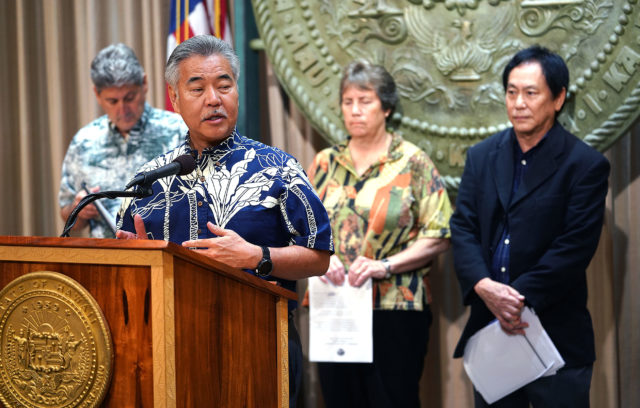For more than three years the development of one of the world’s most advanced observatories has been in legal limbo.
It began when protesters (or “protectors,” as some described themselves) blocked construction of the Thirty Meter Telescope, a $1.4 billion project planned for the top of Hawaii Island’s 13,800-foot Mauna Kea.
At issue were concerns that a site considered sacred by many Native Hawaiians was being desecrated. But so too at issue was the state’s astronomy industry, the economic and educational opportunities it provides and Hawaii’s global reputation as a place to do — or not do — business.
On Tuesday, the Hawaii Supreme Court rendered what may be a final verdict: the construction of TMT can proceed. We wholeheartedly hope that that will be the case.

The plaintiffs in the case have the right to continue legal action, and the protestors have their right to continue protesting.
But now it is time for Hawaii to move forward.
Should protesters again block the road to Mauna Kea’s summit, Gov. David Ige must follow through on his word that he is committed toĚý“the rule of law,” as he said at a press conference Tuesday, ensuring access should TMT construction be allowed.
The TMT is not just another telescope. It will allow humankind to better appreciate the formation and histories of planets, stars, galaxies and the universe itself. The telescope could even lead to discoveries of whether life exists beyond Earth and to discoveries that we have yet to imagine.
While it took several years, the high court’s opinion approving the conservation district use permit for TMT is vindication of the contested case process followed by the state . Extensive oral and written testimony were submitted, the applicable laws were examined and careful, considered conclusions were reached.
DLNR must still evaluate construction plans from the nonprofit global consortium that is designing and developing the TMT. It’s a review process that could take as long as two years.
Along with that process is the need to, as University of Hawaii President David Lassner put it at the press conference following the court’s decision, respect “the awesomeness” that is Mauna Kea. That includes making sure the state follows the Mauna Kea Comprehensive Management Plan, a document that details cultural protocols and training, decommissioning of older telescopes and control of traffic on the mountain.
Multiple audits show that past stewardship of the mountain has fallen far short of expectations. The legal process has been long and drawn out. But we agree that the court’s decision was, in the words of Ige, “fair and right.”
 GET IN-DEPTH
REPORTING ON HAWAII’S BIGGEST ISSUES
GET IN-DEPTH
REPORTING ON HAWAII’S BIGGEST ISSUES
We need your help.
Unfortunately, being named a finalist for a Pulitzer prize doesn’t make us immune to financial pressures. The fact is, our revenue hasn’t kept pace with our need to grow,Ěý.
Civil Beat is a nonprofit, reader-supported newsroom based in ±á˛ą·É˛ąľ±Ę»ľ±. We’re looking to build a more resilient, diverse and deeply impactful media landscape, and we hope you’ll help by .
About the Author
-

The members of Civil Beat’s editorial board are Pierre Omidyar, Patti Epler, Jim Simon, Richard Wiens, Chad Blair, Jessica Terrell and Landess Kearns. Opinions expressed by the editorial board reflect the group’s consensus view. Chad Blair, the Politics and Opinion Editor, can be reached at cblair@civilbeat.org.



